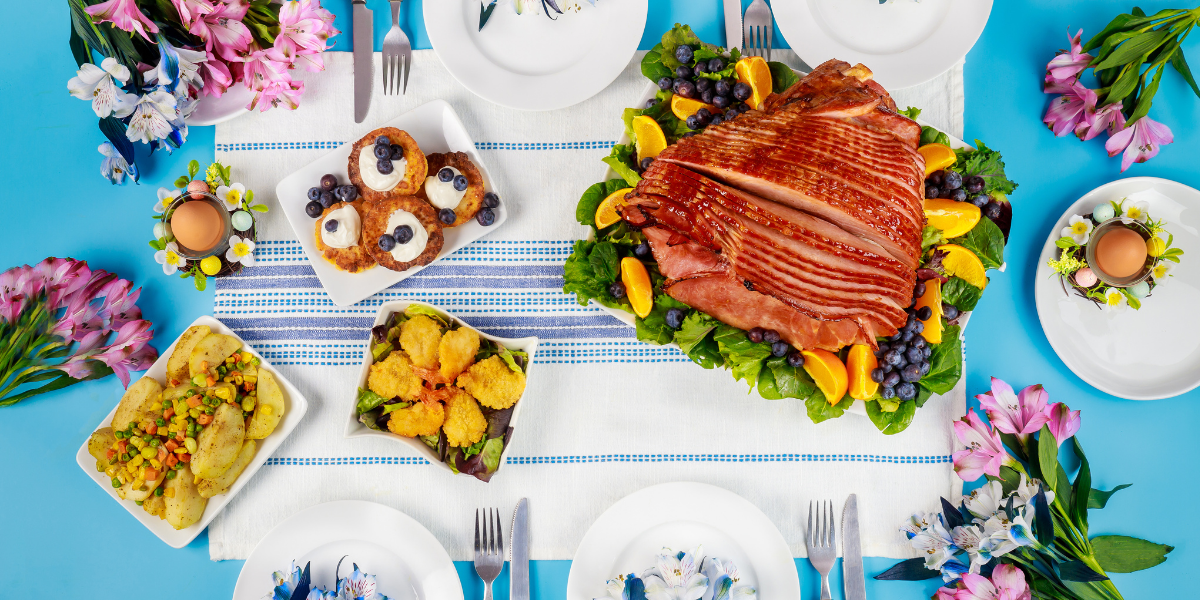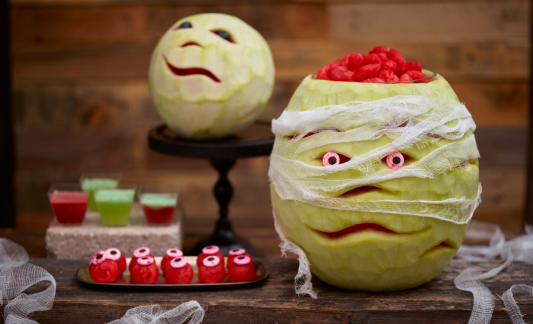Help Isom IGA recover from devasting floods

It’s that time of year again when family and friends gather to celebrate the holiday of Easter, and in many homes, the centerpiece of their celebration is the Easter ham.
We love a good holiday meal, but many of us feel like cooking this meal might be above our skill level – but it doesn’t have to be!
You can serve up a fantastic holiday meal that your guests will think you slaved over for hours in just a few short steps with this guide on everything you need to know about the Easter ham.
What is the best way to purchase a ham?
There are two types of hams, fully cooked and semi-cooked. Both can be found at almost any grocery store in April. Fully cooked hams come with a glaze made with sugar, salt, water, and other seasonings that will not change after cooking.
If you like salty ham or have a sweet tooth, then a fully cooked ham might be best. Semi-cooked hams also come ready to cook but require additional preparation before being cooked.
Another way to purchase a ham is directly from a local butcher. If you don’t have access to a butcher, go with a well-known brand. If it’s prepackaged, check for country of origin.
Cured and uncured hams
Cured hams like Smithfield, Hormel Black Label, and Cook’s are brined in a sugar-based solution and then smoked. Uncured hams have been dry-cured with a mixture of salt, sugar, sodium nitrate (or something similar), and other natural ingredients.
This process is often referred to as country ham curing. Both types of ham can be cooked using various methods- roasting, baking, or frying- but cooking times will vary depending on how you prepare it.
A cured ham should be cooked for at least 20 minutes per pound at 325 degrees Fahrenheit; uncured hams take slightly less time- around 15 minutes per pound at 325 degrees Fahrenheit.
How long do I need to thaw my frozen ham?
Make sure you know how long your ham will need to thaw before serving it. Most hams should be fully thawed one day in advance of your brunch so that they can absorb flavor while they cook.
For a medium-sized, bone-in ham, plan on at least 24 hours of thawing time. If you’re using a frozen spiral cut ham, plan on 5–6 hours of thawing time per pound of meat.
And if you’re planning on cooking your ham right away, make sure to remove it from its packaging and place it in a container or pan filled with cold water; change out the water every 30 minutes until your ham is fully thawed.
Boneless versus bone-in ham
For maximum flavor and classic presentation, bone-in ham is the way to go. Bone-in meat cooks more slowly than boneless meat; it also evenly distributes heat. A bone-in ham will stay moister during cooking, resulting in a juicier end product with a deeper flavor.
However, if you’re looking for convenience or if you’re pressed for time or space in your oven (boneless hams can be stored flat), then boneless may be a better option for you. Boneless hams are typically easier to carve, although there are ways around that if you don’t want to deal with bones!
How do I prepare my ham?
You’ll need a whole or half ham or a rack of pork ribs. Buy from a butcher who can cut off excess skin and fat if needed. Plan on 1/2 lb. per person (plus some for leftovers).
Purchase dry-cured uncooked hams (soaked overnight in saltwater) because they don’t shrink as much during cooking as wet-cured ones; ask your butcher how much cooking time you’ll need based on its weight and size.
If you buy a fresh ham, plan on about 20 minutes per pound to cook it- nearly twice as long as most other cuts. If using a fresh ham, have your butcher remove the skin before cooking, so it doesn’t get tough and stringy when cooked.
A 9–10 pound bone-in fresh ham will serve 12–16 people.
The most important thing when preparing a ham is time. A quality, the boneless ham should be allowed to brine overnight or at least 6 hours before cooking. The brining helps keep the moisture in and adds flavor.
There are two ways to cook your ham: roasting or smoking.
Bake at 350 degrees for 20 minutes per pound (or until internal temperature reaches 140 degrees).
For smoking, preheat smoker for 30 minutes with wood chips of choice on medium heat; place ham on a rack inside smoker and smoke for 4-6 hours (internal temperature should reach 160 degrees).
After cooking, let rest 15 minutes before carving.
What should I serve with my holiday ham?
Picking a side dish for your ham might seem easy, but it can be tricky. There are many different ways you can serve your ham, but one of our favorites is a homemade pineapple chutney that pairs beautifully with just about any style of ham.
Pineapple has a natural sweetness and acidity that helps cut through fattiness from the meat, so it’s an excellent complement. The recipe below makes enough for two hams; if you only have one on hand, simply halve it and freeze half for another time.
You can also make it up to three days in advance; keep it covered in an airtight container in your refrigerator until ready to use.
The Bottom Line
Easter is coming up, and for many people, it’s a time to celebrate one of their favorite holidays- with family, friends, and good food. And few things go better with family and friends than an Easter ham.
But even if you’re not familiar with cooking hams, don’t worry! The following post provides all you need to know about preparing an Easter ham, including selecting, seasoning, roasting, slicing- making sure everyone has a chance to try some. Enjoy!
Previous Story
← Save Time in the Kitchen with Freezer Hacks
Next Story
Tips for Grocery Shopping Sustainably →
You May Also Like
These Stories on Shopper Solutions
Oct 8, 2025 12:52:53 PM |
2 min read
May 21, 2025 12:15:00 AM |
2 min read
Aug 13, 2024 10:39:24 AM |
2 min read
